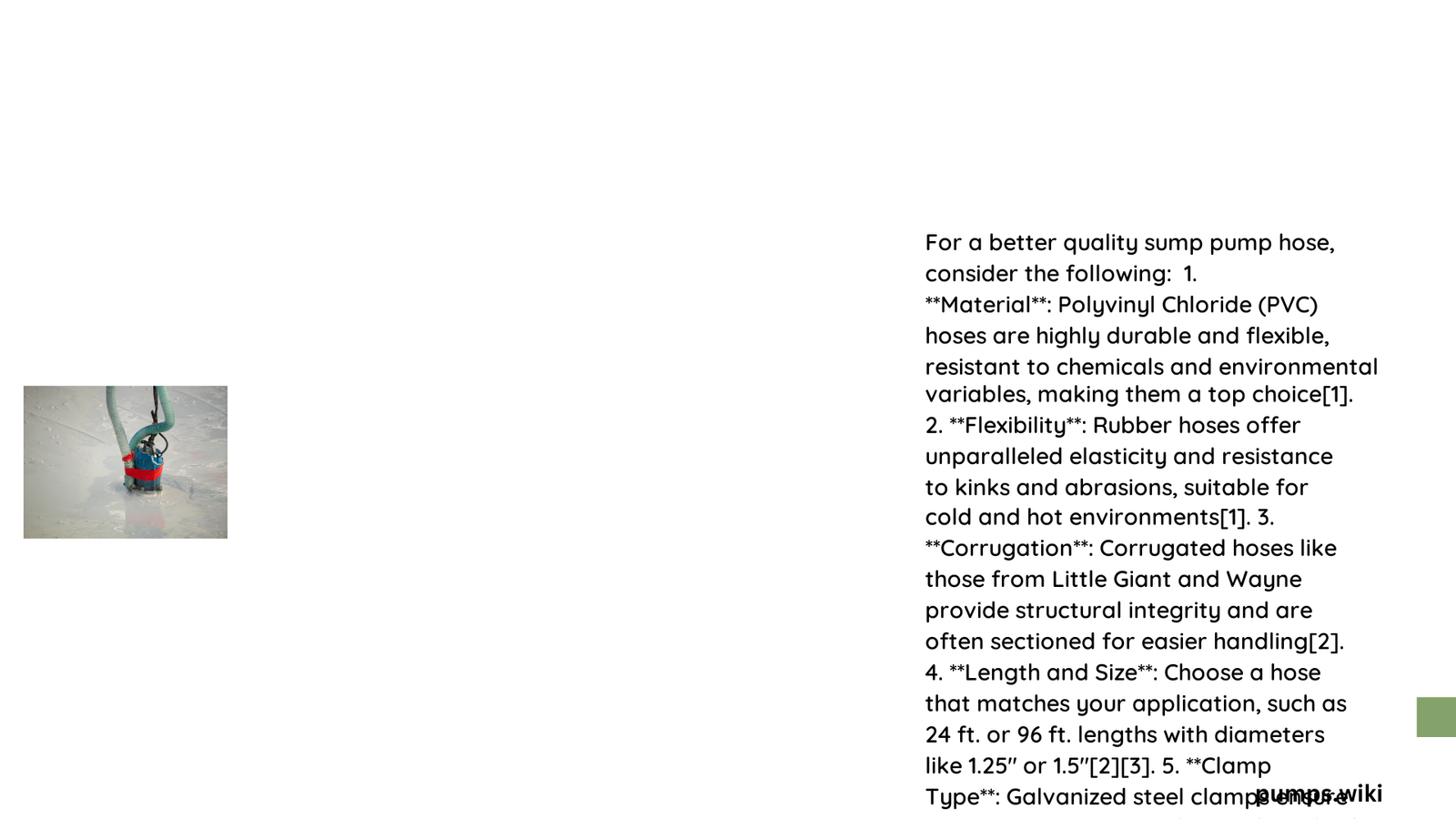Homeowners seeking reliable basement water management understand that a better quality sump pump hose can prevent potential water damage and ensure efficient drainage. The right hose acts as a critical component in protecting your property from moisture-related issues, offering durability, flexibility, and consistent performance across various environmental conditions. Selecting a superior discharge hose involves understanding material specifications, flow rates, and installation requirements.
What Makes a Sump Pump Hose High-Quality?
Why Material Selection Matters for Sump Pump Hoses?
High-quality sump pump hoses are distinguished by their material composition and performance characteristics. The primary materials include:
- Polyethylene
- Temperature range: -40°F to 140°F
- Excellent UV resistance
- Flexible and durable design
-
Ideal for outdoor installations
-
PVC
- Corrosion-resistant
- Robust construction
- Multiple diameter options
-
Long-term reliability
-
Rubber
- Superior flexibility
- Wide temperature tolerance
- Resilient in tight spaces
- Adaptable to various environments
| Material | Temperature Range | UV Resistance | Flexibility | Durability |
|---|---|---|---|---|
| Polyethylene | -40°F to 140°F | High | Good | Excellent |
| PVC | 32°F to 120°F | Moderate | Moderate | Very Good |
| Rubber | -20°F to 180°F | Low | Excellent | Good |
How Do Dimensions Impact Sump Pump Hose Performance?
Selecting the appropriate hose dimensions is crucial for optimal water discharge:
- Diameter Considerations
- Standard sizes: 1.25″ and 1.5″
- Larger diameters increase flow capacity
-
Prevent potential water backup
-
Length Requirements
- Typical lengths: 24 feet
- Ensure sufficient distance from foundation
- Allow gravity-assisted drainage
What Are Critical Performance Characteristics?
Flow Rate and Pressure Management
- Flow Capacity
- Depends on hose diameter
- Typically ranges between 30-60 gallons per minute
-
Matches most residential sump pump specifications
-
Pressure Tolerance
- Designed to withstand typical residential pump pressures
- Prevents rupture during continuous operation
- Maintains consistent water discharge
How to Install and Maintain Your Sump Pump Hose?
Installation Best Practices
- Measure discharge distance accurately
- Use appropriate hose clamps
- Ensure gradual downward slope
- Avoid sharp bends
- Protect from direct sunlight when possible
Maintenance Tips
- Inspect annually for wear and tear
- Clean exterior surface periodically
- Check for potential cracks or degradation
- Replace every 5-7 years or as manufacturer recommends
What Budget Should You Expect?
Better quality sump pump hoses typically range from $50 to $150, depending on:
– Material composition
– Length
– Brand reputation
– Additional features
Conclusion

Investing in a superior sump pump hose protects your property from potential water damage. By understanding material specifications, performance characteristics, and installation techniques, homeowners can make informed decisions that ensure long-term drainage efficiency.
